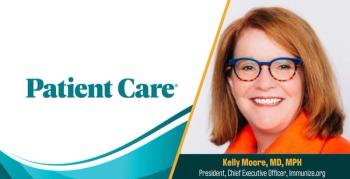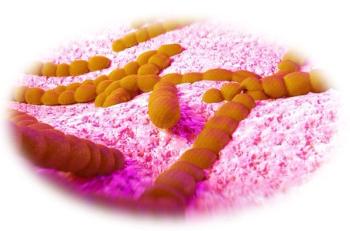
Acalculous Cholecystitis
After 1 day of upper abdominal pain, nausea, and vomiting, a 32-year-old man sought medical care. He had no significant medical history. The patient had tenderness and guarding in the right upper quadrant; no mass was detected. The remainder of the physical examination was normal.
After 1 day of upper abdominal pain, nausea, and vomiting, a 32-year-old man sought medical care. He had no significant medical history. The patient had tenderness and guarding in the right upper quadrant; no mass was detected. The remainder of the physical examination was normal.
The white blood cell count was 18,500/µL. Serum electrolyte, amylase, and glucose levels were within normal limits. A sonogram revealed no stones in the gallbladder. CT showed a normal pancreas with a thickened gallbladder wall and pericholecystic fluid (Figure, arrows); the gallbladder and the biliary tree were free of stones and no ductal dilatation was noted.
Dr Virendra Parikh of Fort Wayne, Ind, writes that a laparoscopic cholecystectomy disclosed an inflamed gallbladder without stones. The pericholecystic fluid collection was aspirated. Cultures of this fluid and of bile from the gallbladder grew no organisms. Histopathologic examination of the gallbladder confirmed acute hemorrhagic cholecystitis.
Approximately 10% of all cases of gallbladder inflammation are caused by acute acalculous cholecystitis. The incidence of this disorder is rising, and about half of cases are associated with severe trauma or major surgery. Other possible causative factors include diabetes mellitus, cardiovascular disorders, autoimmune diseases, bacterial and fungal sepsis, hyperalimentation, and AIDS. The disease can develop in patients who have no predisposing factors.
Prompt diagnosis and surgical treatment are essential for a successful outcome. This patient's recovery from surgery was uneventful, and he is doing well.
References:
FOR MORE INFORMATION:
- Glenn F, Becker CG. Acute acalculous cholecystitis: an increasing entity. Ann Surg. 1982;195:131-136.
- Williamson RC. Acalculous disease of the gall bladder. Gut. 1988;29:860-870.
Newsletter
Enhance your clinical practice with the Patient Care newsletter, offering the latest evidence-based guidelines, diagnostic insights, and treatment strategies for primary care physicians.






























































































































































































































































































